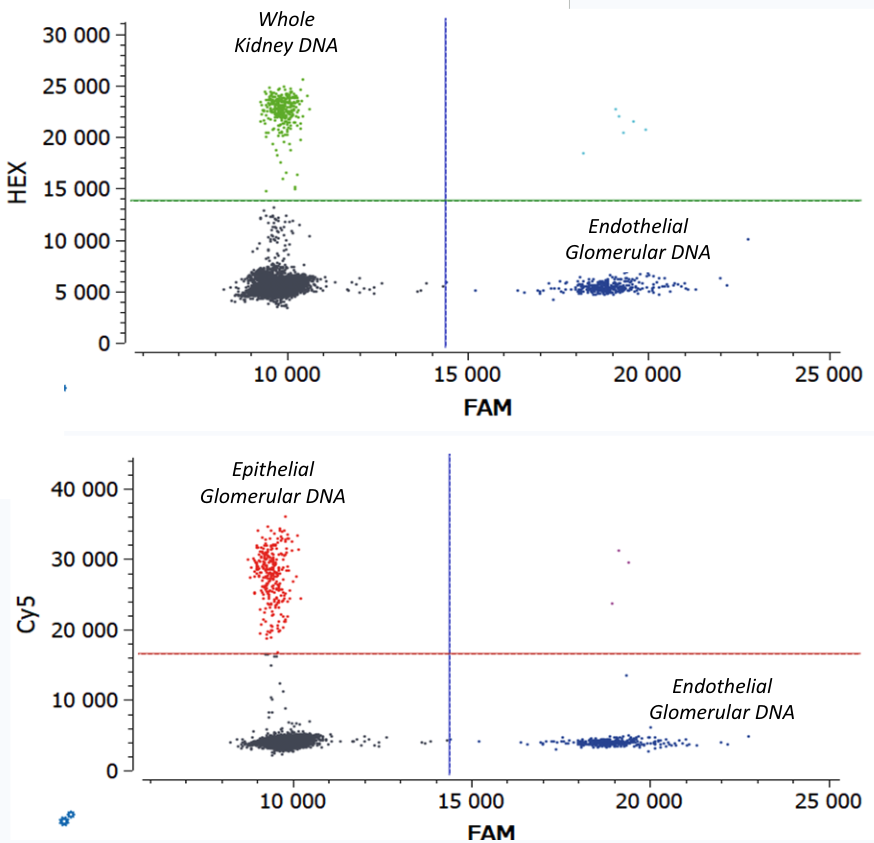- contact@cgenetix.com
- + 33 6 67 77 23 94
TECHNOLOGY
Digital pCR based testing
Technology
fast, accurate and highly sensitive methods for circulating cell-free dNA analysis

A) The sample contains our DNA target diluted in a non-specific DNA molecule;
B) The sample is divided into thousands of compartments such that our DNA target can be isolated ;
C) in each compartment, a PCR reaction happens amplifying specifically our DNA target;
D) According to the initial DNA molecule incorporated into the compartment, a fluorescent signal is detected and counted allowing an absolute quantification of our targeted DNA.
Technology
fast, accurate and highly sensitive methods for circulating cell-free dNA analysis

Digital-PCR is a microfluidic technic based on PCR amplification with an additional step of sample partitioning in thousand micro-compartments (droplets or chambers).
After amplification, droplets containing target sequence are detected by fluorescence and scored as positive, and droplets without fluorescence are scored as negative. Poisson statistical analysis of the numbers of positive and negative droplets yields absolute quantitation of the target sequence.
Improved digital-PCR systems with multiple color detection channels allowed the expansion of multiplexing strategies to quantify several targets within a single reactive well.


2D scatterplot representing DNA quantification from different kidney compartments. Each cluster correspond to positive compartments containing our targeted DNA molecules
CGenetix develops the new generation of liquid biopsy biomarkers to evaluate organs damages during a pathological process.
